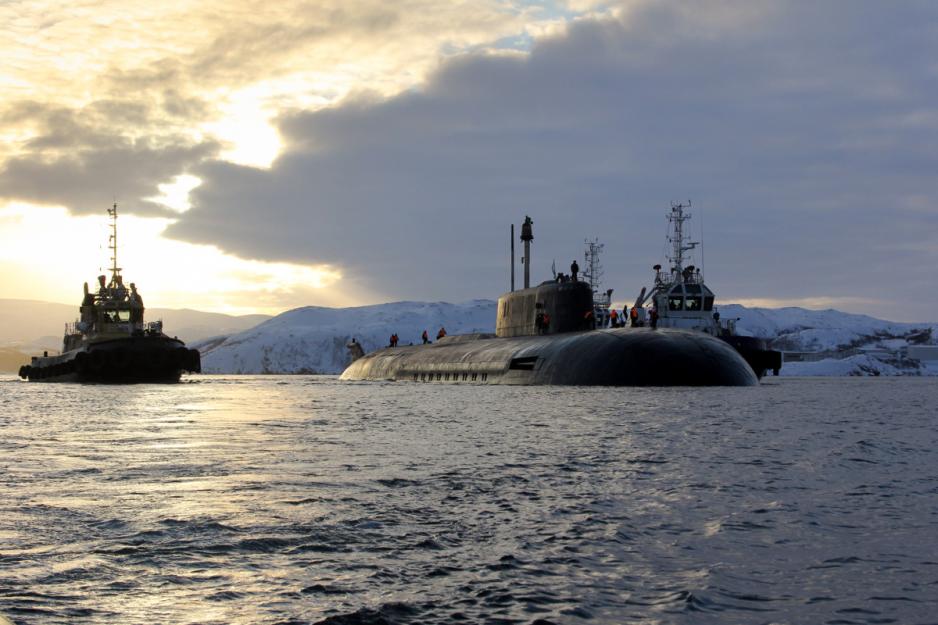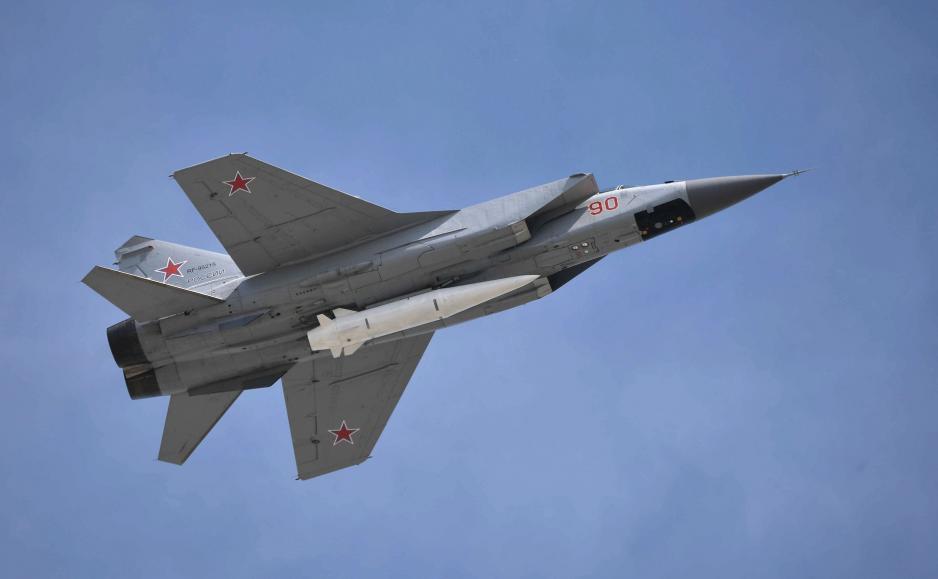Russia Elevates Importance of Northern Fleet Upgrading it to Military District Status

Arrival of the Northern Fleet nuclear submarine missile cruiser "Orel". (Source: Andrei Luzik/mil.ru)
Russia has upgraded the administrative status of its Northern Fleet for a second time in less than a decade. As of 1 January 2021 the Northern Fleet, whose area of operation includes the Arctic, has become its own military district.
In a further sign of the strategic importance of Russia’s Arctic military assets President Putin has upgraded the status of the Northern Fleet. The fleet, primarily based near Murmansk, which was previously upgraded and designated a Joined Strategic Command in 2014, now joins four other military districts in Russia. It consolidates a large part of Russia’s Arctic capabilities under one roof and contains territory of the Republic of Komi, the regions of Arkhangelsk and Murmansk and the Nenets Autonomous Region.
Per a presidential decree signed by President Putin on 21 December 2020 Russia’s Northern Fleet became its own military district on 1 January 2021. It represents the first time that a fleet’s standing is elevated to equal to that of the existing four military districts – West, South, East and Central.
The Northern Fleet military district will be responsible for the Arctic, the Russia Arctic coastline, and the Northern Sea Route. The fleet’s main naval base Severomorsk is located near Murmansk and it maintains at least six additional bases across the district.
A decade of revitalizing Northern Fleet
According to security experts it represents a logical step which comes after more than a decade of investments in the fleet’s assets: revitalizing existing Arctic military bases and constructing new ones, constructing capable radar installations and stationing modern weaponry in the region.
“To a certain degree it’s an artificial act, it’s a recognition that offensive and defensive capabilities of the Northern Fleet represent one of the most important elements of the Russian military,” explains Rob Huebert, associate professor at the University of Calgary and a senior research fellow with the Centre for Military and Strategic Studies.
“The Northern fleet is the Russian nuclear deterrent. Nuclear deterrence has been the number one issue and Russia has always been able to maintain and protect that deterrence,” he continues.
The modernization of the Northern Fleet’s assets and Arctic military bases over the past decade or so has followed a predictable sequence aimed at protecting vital infrastructure and ports, building up defensive Russian air capabilities – including the stationing of the advanced S-400 missile system in the Arctic – and now adding and extending the reach of offensive capabilities.
Adding offensive capabilities
To that end the Russian Ministry of Defense announced that it will equip the Northern Fleet with the hypersonic missile Kh-47M2 Kinzhal, also called Dagger. The nuclear-capable Dagger, which first flew in 2018, can travel up to ten times the speed of sound and travel up to 2,000 kilometers. At such high speeds it represents a challenge for western missile defense systems.
Dagger is also capable of actively changing its trajectory and performing evasive maneuvers to avoid detection or destruction. According to military experts it can overcome any current or planned U.S. air or missile defense systems.

Hypersonic missile system Kh-47M2 "Dagger” carried by a MiG-31 during a military parade on the Red Square in 2018. (Source: The Presidential Press and Information Office)
Training of personnel and construction of infrastructure to operate the missile will begin in 2021. Russia will use MiG-31 fighters to carry Dagger far into the Arctic projecting the country’s power in the Arctic region, according to the Ministry. The first squadron of Dagger-equipped MiGs will be stationed on the Kola Peninsula and is part of the newly-created Northern Fleet military district.
Escalating to De-escalate?
The newly-created Northern Fleet district comes on the heels of increasing military activity in the region, including the resumption of long-range Russian bomber patrols, joint training between the U.S. and Norwegian aerial forces, and a large-scale NATO exercise above the Arctic Circle in 2018.
“One one hand Russia has become more aggressive since 2008 but it is also reacting to new weapons systems introduced by the U.S. Russia isn’t acting on their own but in an effort to contain NATO and reacting to posturing of the U.S.,” elaborates Huebert.
As for the question of how much climate change and the opening of the Arctic play a role in this posturing? Not much according to Huebert.
“Even if the ice wasn’t melting the fundamentals would remain the same, the ideological basis for disagreement between the U.S. and Russia has not really changed between 1991 and today. In a sense, the Cold War never ended and Russia has re-emerged after catching its breath.”

